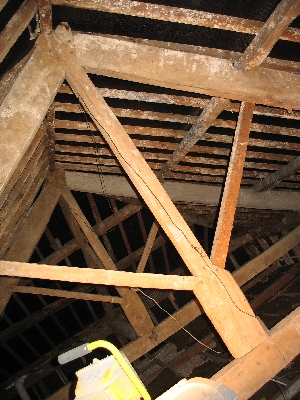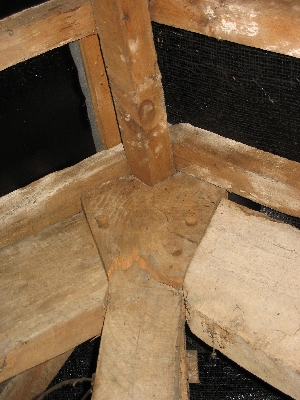Conservation Carpentry



This series of photographs showing portions of the roof of a house in south Devon, that we were commissioned to evaluate & conserve where necessary.
The roof being late Georgian in date (c1790-1830) we could not be more precise without a chronology test being undertaken, consisted of a traditional cut & pitched roof fully hipped & slate hung. Being a mixture of hard and soft wood, softwood being the ridge and common stick rafters, Hardwoods, a mix of Oak & Elm being used in the three king post trusses employed in the roof, hips were of oak, as were the crown rafters, jacks & purlins (it was a sign of a good roof to see dragon ties at each corner, the hips being fully supported on these).
Most of the timbers viewed showed evidence of mechanised cutting, though in the case of the king post trusses, there was clear evidence of some of the timbers being hewn by hand with carpenters marks being used through out. The overall condition of the roof was good considering its age, however there has been a lot of activity from wood-boring insects through out the roof which unfortunately is common place in buildings of this age. As a direct result of prolonged infestation, coupled with the constant loading of the crown and hip rafters at the top of one of the trusses (picture 1 furthest one) has caused the head of the king post to fail, (evident in picture 2). This joint was stabilized with the addition of a hand wrought saddle strap fabricated at a blacksmiths local to us.
Other repairs included replacing two timber cleats on separate tie beams one of witch is shown in (picture 3) again it was pleasure to see hand made, hand forged rose headed nails used to anchor the cleats to the tie beams.
This is a brief view of some of the conservation work we can undertake, please feel free to contact us with your requirements.